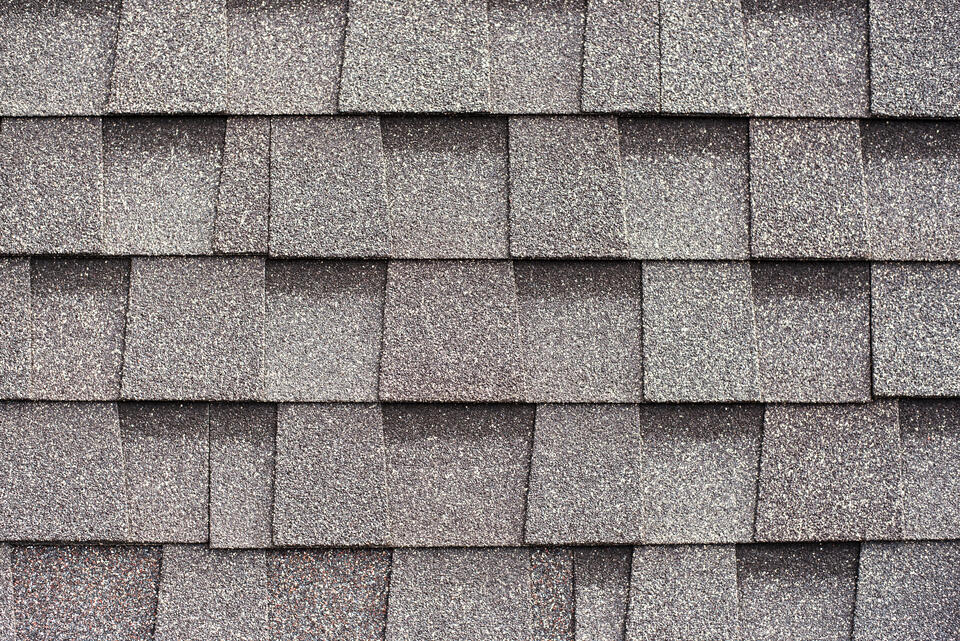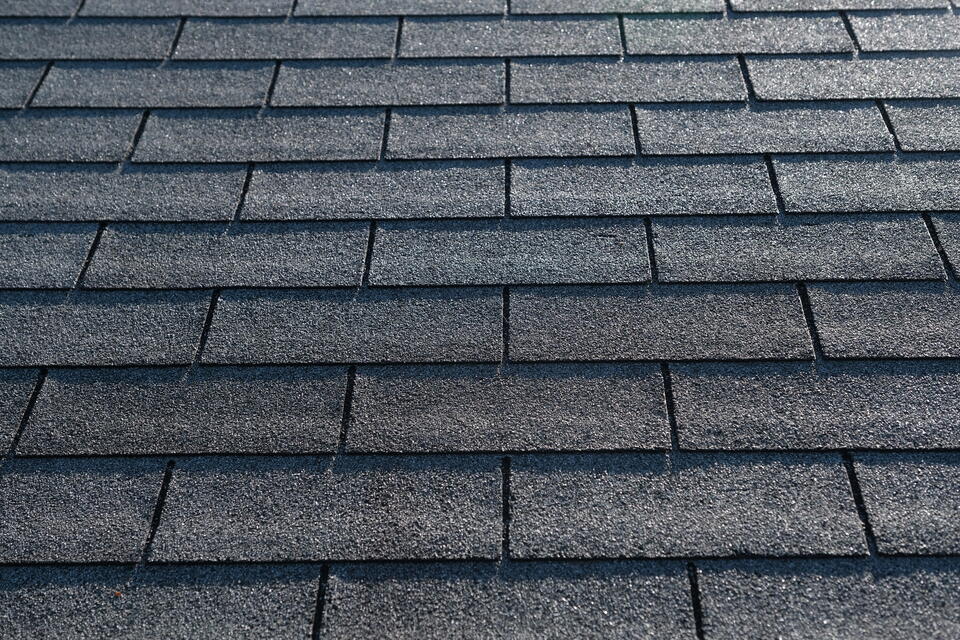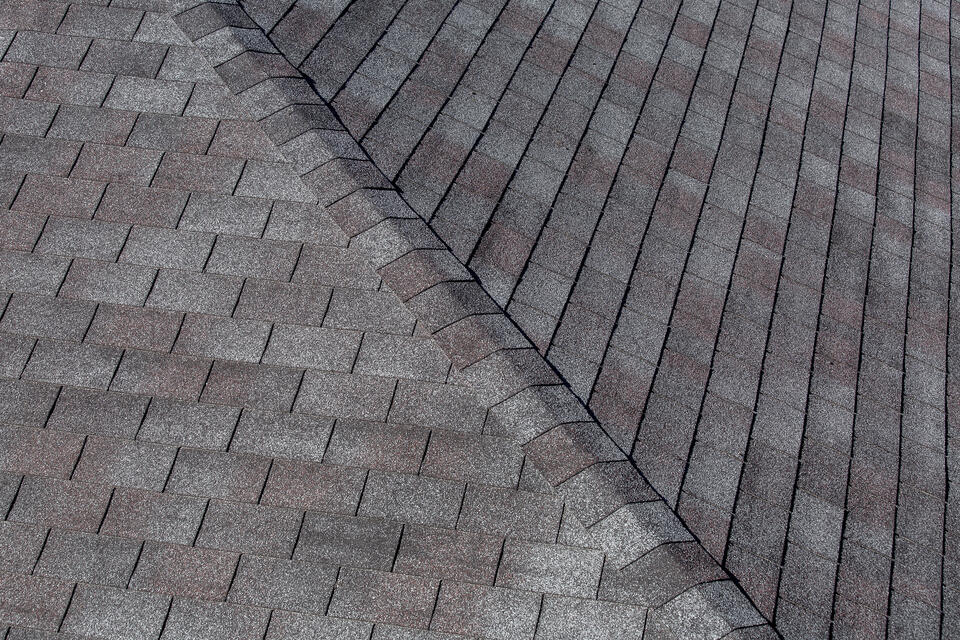Architectural Shingles Vs. 3-Tab: Pros & Cons
Homeowners face a myriad of choices for roofing materials. Two of the most common options are architectural shingles and 3-tab shingles. But which one is right for you? Below, we’ll compare architectural shingles vs 3-tab shingles to help you make an informed decision for your home, including:
- What are architectural shingles?
- What are 3-tab shingles?
- 5 differences between architectural shingles and 3-tab shingles
- Making your decision
🤔 What Are Architectural Shingles?

Architectural shingles, also known as dimensional or laminate shingles, are a popular choice for many homeowners. Unlike their 3-tab counterparts, architectural shingles are layered, which adds dimension and depth to the roof. This layered design gives them a more luxurious appearance, often resembling more expensive roofing materials like cedar shingles or slate tiles.
These shingles are constructed with a heavier base mat and multiple layers of asphalt, making them thicker and more durable. This added thickness not only improves their appearance but also enhances their ability to withstand harsh weather conditions. The durability of architectural shingles often translates into a longer lifespan, providing excellent value over time.
Additionally, architectural shingles come in a wide range of colors and styles, allowing homeowners to achieve the look they desire. Whether you want to match your home’s existing color scheme or create a bold new look, there’s likely an option that fits your aesthetic preferences.
Advantages of Architectural Shingles
Architectural shingles’ multi-layered construction offers several advantages:
- Enhanced Wind and Impact Resistance: Their increased thickness improves resistance to wind uplift and makes them reliable in severe weather conditions like hurricanes or hailstorms.
- Superior Noise Reduction: The thicker layers help dampen sound from rain or hail, providing a quieter indoor environment for homeowners who value peace and tranquility.
- Longer Lifespan: Architectural shingles have an extended lifespan, resulting in less frequent replacements and long-term cost savings. While the initial investment may be higher, the reduced need for maintenance and replacement can make them a more economical choice over time.
👉 What Are 3-Tab Shingles?

3-tab shingles are the traditional choice for many homeowners. Named for their distinct cut, which gives the appearance of three separate tabs per shingle, they provide a uniform look. They are made from a single layer of asphalt and have fewer materials, which makes them lighter than architectural shingles.
One of the main advantages of 3-tab asphalt shingles is their affordability. They tend to be less expensive than architectural shingles, which can be a significant consideration for homeowners on a tight budget. Despite the lower cost, they still offer reliable protection against weather elements.
However, because they are thinner and lighter, 3-tab shingles typically have a shorter lifespan. They may not hold up as well under severe weather conditions, such as heavy winds or hail. This means that while the upfront costs are lower, you might face more frequent replacements or repairs.
Advantages of 3-Tab Shingles
For those looking for a simple, functional roofing solution, 3-tab shingles provide a reliable option.
- Affordability: 3-tab shingles are budget-friendly, allowing for complete roof installation without overspending.
- Lightweight: Their light weight simplifies installation and reduces the load on your home’s structure, ideal for roofs with lower weight tolerances.
- Quick Installation: The ease of handling makes for a faster installation process.
- Variety of Colors: Available in multiple colors, they let you match your roof to your home’s existing color scheme, maintaining aesthetic appeal while staying within budget.
⚖️ 5 Differences Between Architectural Shingles and 3 Tab Shingles
Understanding the differences between architectural shingles and 3-tab shingles is crucial for homeowners when choosing the right roofing material. This knowledge can impact durability, aesthetics, and overall value of their home.
1. Cost Comparison
When evaluating roofing options, cost is a critical factor for many homeowners. Architectural shingles, with their thicker composition and enhanced features, come with a higher price tag. This includes both the cost of materials and installation, as the added weight and complexity can require more expertise and time.
3-tab shingles, on the other hand, are more economical. Their straightforward design means they require fewer materials and less labor to install, resulting in lower upfront costs. This makes them an attractive option for homeowners looking to minimize expenses.
However, it’s essential to consider the long-term costs. While architectural shingles are more expensive initially, their extended lifespan and reduced maintenance needs can lead to savings over time. In contrast, the shorter lifespan of 3-tab shingles may result in more frequent replacements, potentially offsetting the initial savings.
2. Durability and Longevity
When selecting shingles, durability and longevity are crucial considerations. Architectural shingles are known for their robustness. With a lifespan that often exceeds 30 years, they provide a durable solution for many homeowners. Their ability to withstand harsh weather conditions, such as high winds and heavy rain, makes them a reliable choice for long-term protection.
3-tab shingles, while still providing adequate protection, generally have a shorter lifespan of 15-20 years. Their single-layer construction makes them less resistant to extreme weather conditions, which can result in a shorter overall lifespan.
When weighing durability and longevity, consider your local climate and weather patterns. Homeowners in regions prone to severe weather may find the added resilience of architectural shingles a worthwhile investment, while those in milder climates might opt for the more economical 3-tab shingles.
3. Aesthetic Appeal
Aesthetic appeal is often a deciding factor when choosing roofing materials. Architectural shingles offer a distinct advantage in this area, with their multi-dimensional design adding depth and character to your roof. This can enhance your home’s curb appeal and increase its overall value.
These shingles are available in various styles and colors, allowing homeowners to achieve the desired look. Whether you prefer a traditional appearance or a more modern aesthetic, architectural shingles offer a versatile solution.
3-tab shingles, while simpler in design, still provide a clean and uniform look. They are suitable for homeowners who prefer a classic aesthetic without the added complexity of dimensional shingles. Available in a range of colors, they can complement various architectural styles.
4. Installation Process
The installation process is an essential consideration for homeowners. Architectural shingles, with their added thickness and weight, often require a more detailed installation process. This means hiring experienced roofing professionals who can ensure the shingles are correctly placed and secured.
3-tab shingles, due to their lighter weight, are easier and quicker to install. This can result in lower labor costs and a faster turnaround time for your roofing project. Homeowners should still seek skilled roofing professionals to ensure proper installation, regardless of the shingle type.
Understanding the installation process and its implications can help you make informed decisions. Consider factors like labor availability, project timelines, and potential costs when choosing between architectural and 3-tab shingles.
5. Environmental Impact
The environmental impact of roofing materials is becoming an increasingly important consideration for homeowners. Architectural shingles, being thicker and more durable, can reduce the frequency of replacements, resulting in less waste over their lifespan. Some manufacturers also offer environmentally-friendly options made from recycled materials.
3-tab shingles, while less durable, are often recyclable. This means that at the end of their life, they can be repurposed instead of ending up in landfills. Homeowners interested in sustainability should inquire about the recyclability of the shingles they choose.
Both types of shingles can contribute to energy efficiency by reflecting sunlight and reducing the heat absorbed by your home. This can lead to lower energy bills and a smaller carbon footprint.
💡 Making Your Decision

Making the right decision between architectural and 3-tab shingles involves weighing various factors, including cost, durability, aesthetics, and environmental impact. Each homeowner’s unique needs and preferences will play a significant role in this decision.
Architectural shingles offer enhanced durability, a longer lifespan, and superior aesthetic appeal, making them an excellent choice for homeowners seeking long-term value. However, their higher cost may be a consideration for budget-conscious individuals.
3-tab shingles, meanwhile, provide a cost-effective solution for those looking for a reliable, no-frills option. Their affordability and simplicity make them a practical choice for many homeowners.
🙌 Choosing the Right Roofing Shingles with Shamrock Roofing
When choosing between architectural and 3-tab shingles, there’s no one-size-fits-all answer. Each type offers unique advantages, and your decision should be based on your specific needs and circumstances.
At Shamrock Roofing and Construction, we understand the importance of making the right choice for your home. With over 49 years of experience, our team is here to guide you through the process, offering expert advice and quality service. Whether you’re leaning toward architectural shingles for their durability or considering 3-tab shingles for their affordability, you can trust us to deliver outstanding results.If you’re ready to explore your roofing options,contact Shamrock Roofing and Construction today. Our dedicated team is ready to help you make the best decision for your home, ensuring your roof provides lasting protection and beauty.
